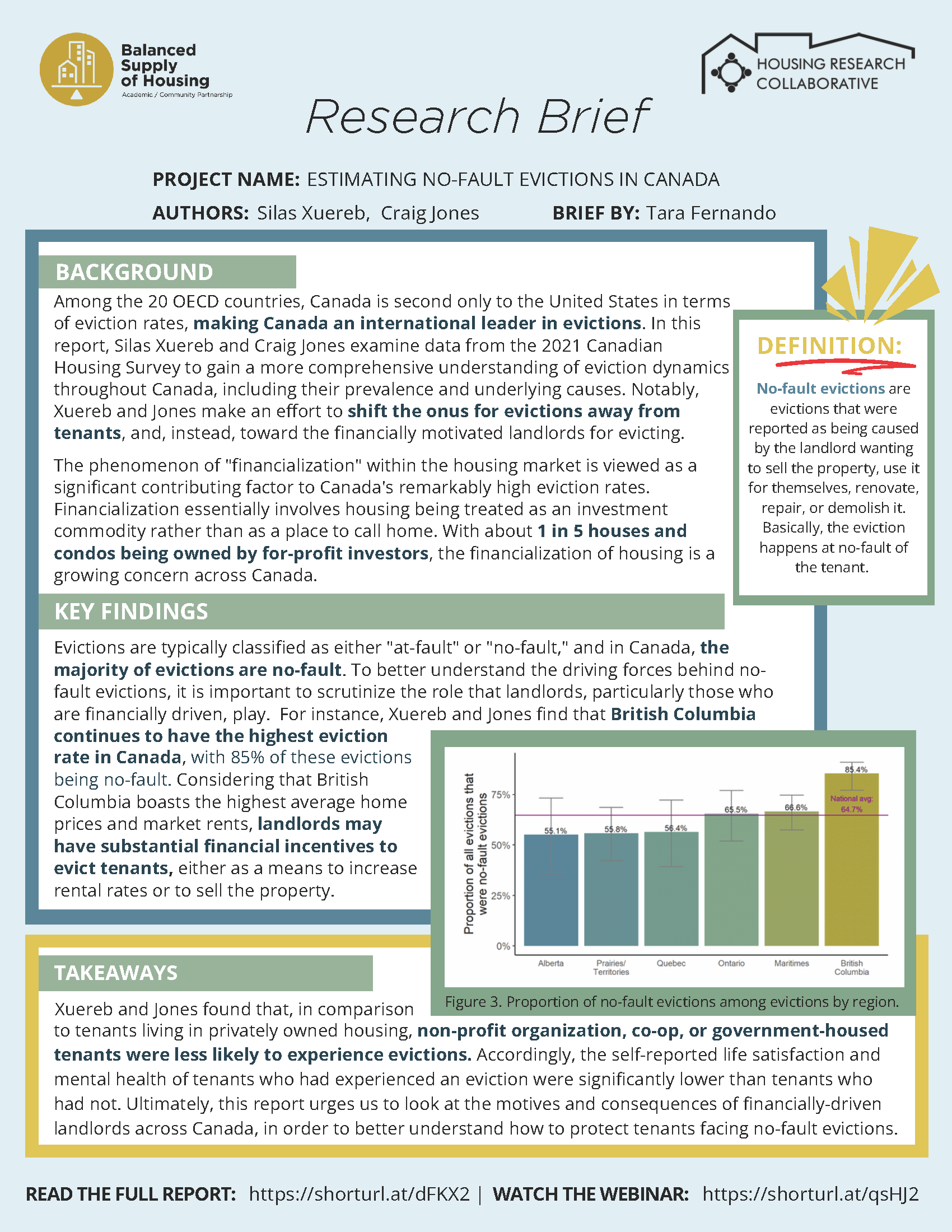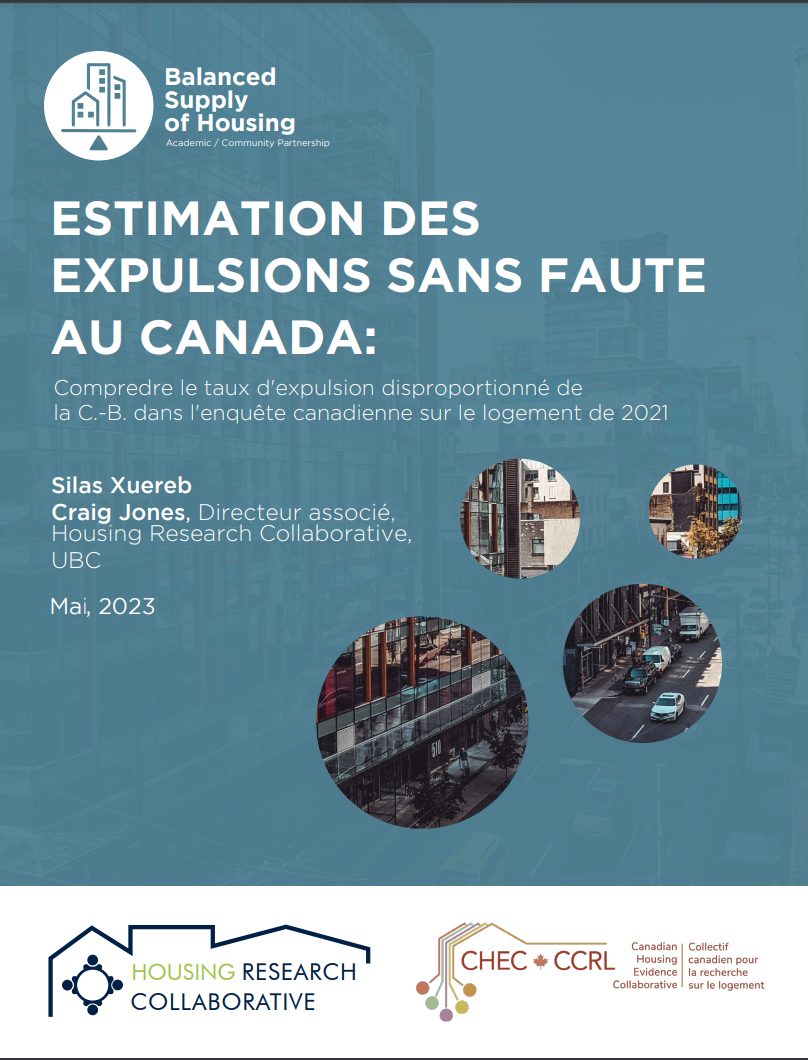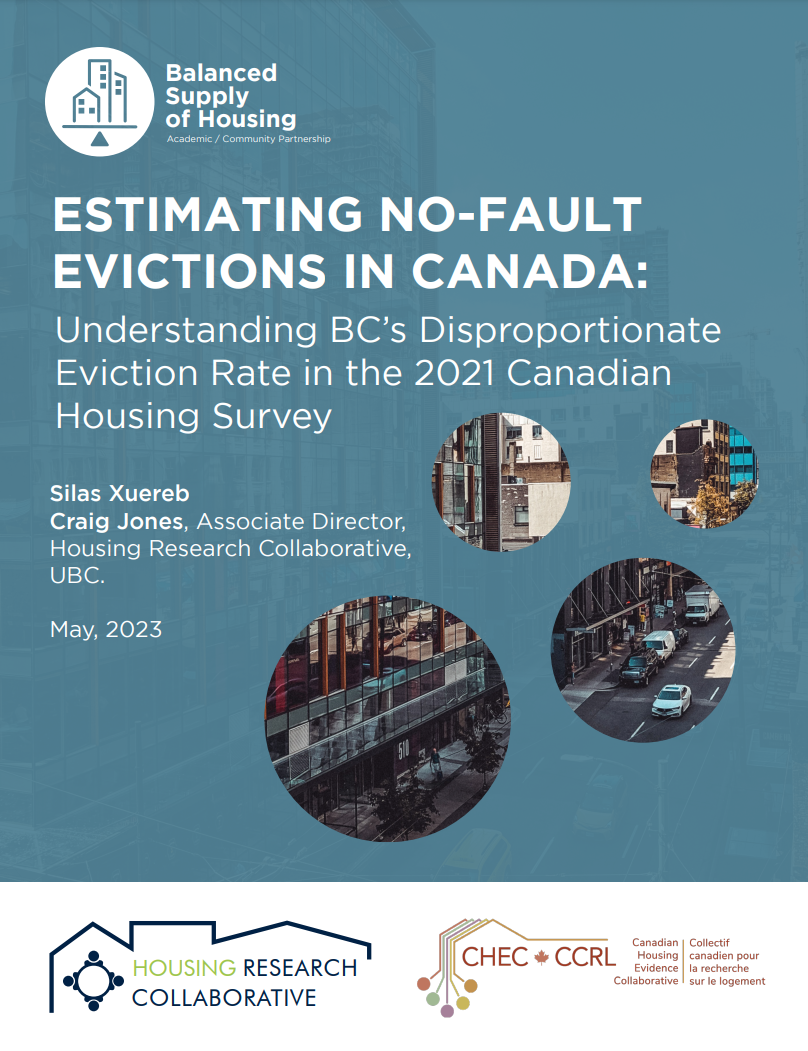Estimating No-Fault Evictions in Canada (CHS 2021)
Last modified:
This report uses data from the 2021 Canadian Housing Survey (CHS) to update estimates of eviction rates across Canada, examine the reasons for eviction reported by current tenants, and estimate changes in eviction rates during the COVID-19 pandemic.
Jump to Research OutputsEvictions data like you’ve never seen it before
This report uses data from the 2021 Canadian Housing Survey (CHS) to update estimates of eviction rates across Canada, examine the reasons for eviction reported by current tenants, and estimate changes in eviction rates during the COVID-19 pandemic.
Project Lead(s):
Home Organization:
University of British Columbia
Other Participants:
Silas Xuereb
Community Partner:
BCNPHA
Funding Stream:
Comparative Project
Project Status:
Complete
Results
We find that British Columbia continues to have the highest eviction rate in the country. 10.5% of renter households in British Columbia reported being forced to move from April 2016 to early 2021 (the five years prior to data collection), compared to 5.9% nationally.
British Columbia’s high eviction rate is driven by higher rates of no-fault evictions. Evictions are classified according to the reason the former tenant gave for being forced to move. No-fault evictions include those tenants reported were caused by the landlord wanting to sell the property, use it for themselves, renovate, repair, or demolish it. 85% of evictions reported by renter households in British Columbia in the five years prior to data collection were no-fault evictions, compared to only 65% nationally. Rates of at-fault evictions (which include all evictions that are not no-fault) are similar in British Columbia and the rest of Canada.
Nationally, renter households reported that one third of evictions experienced in the five years prior to data collection were motivated by the landlord wanting to sell the property, another quarter were motivated by the landlord wanting the property for their own use, and 7.5% were motivated by the landlord’s desire to renovate, repair, or demolish the property. Only about 1 in 20 evictions were caused by late or non-payment of rent, and 2 in 10 were due to other reasons related to the tenants’ behaviour.
Tenants currently living in housing owned by non-profits, co-ops, or governments were significantly less likely to have experienced evictions in the five years prior to data collection than tenants living in privately owned housing. Evictions were also less likely for tenants living in social and affordable housing although the type of landlord plays a larger role.
National eviction rates were lower than in the previous wave of the CHS, although the difference was not statistically significant. Results suggest that pandemic-related eviction bans may have slightly reduced evictions but that tens of thousands of renter households were evicted during the first year of the pandemic despite the bans.
After controlling for sociodemographic characteristics, self-reported life satisfaction and mental health were significantly lower for tenants who had experienced an eviction within the five years prior to data collection than for tenants who had not.
Few differences in eviction rates are discernible across demographic groups, although Indigenous renters have a higher five-year eviction rate, 10.4%, than non-Indigenous renters, 6.2%.
Research Outputs
Existing reports, presentation materials, podcasts, webinar recordings, and research summaries.
Alert the presses!
This project hasn’t hit the news yet.


